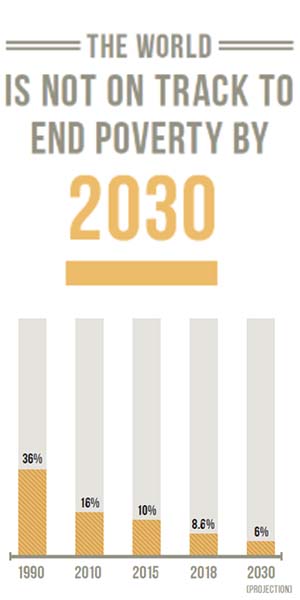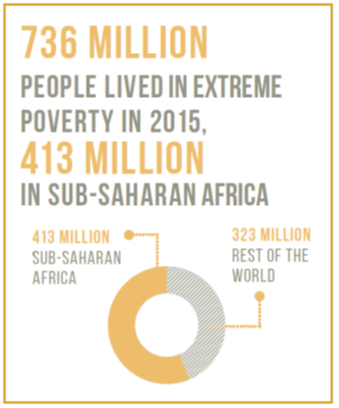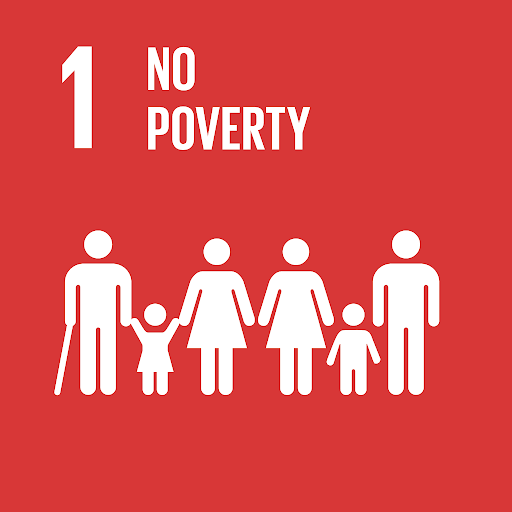Progress
 From 1990 to 2018, the number of people living in extreme poverty dropped by over 27%, and, over the past 25 years, more than one billion people lifted themselves out of poverty. Nevertheless, 10% of the world population still lives in extreme poverty today, struggling to secure basic needs like health, education, and access to water and sanitation. While global gains against poverty must be acknowledged, it is clear that progress is uneven and limited for vulnerable groups. The international community must cooperate to get back on track to achieving its target to end poverty by 2030.
From 1990 to 2018, the number of people living in extreme poverty dropped by over 27%, and, over the past 25 years, more than one billion people lifted themselves out of poverty. Nevertheless, 10% of the world population still lives in extreme poverty today, struggling to secure basic needs like health, education, and access to water and sanitation. While global gains against poverty must be acknowledged, it is clear that progress is uneven and limited for vulnerable groups. The international community must cooperate to get back on track to achieving its target to end poverty by 2030. Global Disparities
 Rapid growth in countries such as China and India has lifted millions out of poverty, but progress remains limited in other regions, such as South Asia and sub-Saharan Africa, which account for 80% of those living in extreme poverty. Among the 736 million people who lived on less than $1.90 a day in 2015, 413 million were in sub-Saharan Africa.
Rapid growth in countries such as China and India has lifted millions out of poverty, but progress remains limited in other regions, such as South Asia and sub-Saharan Africa, which account for 80% of those living in extreme poverty. Among the 736 million people who lived on less than $1.90 a day in 2015, 413 million were in sub-Saharan Africa.Social protection systems reduce the burden of poverty and can also prevent people from falling into poverty in the first place. As of 2018, over half of the world’s population has no access to social protection. While 92% of children in Europe and North America are included in social protection systems, less than 15% of children in Eastern and South-Eastern Asia as well as Sub-Saharan Africa are covered.
Poverty overwhelmingly affects rural populations
About 79% of the world’s poor live in rural areas. Worldwide, the poverty rate in rural areas is more than three times higher than in urban areas.Poverty disproportionately affects children and young adults
One out of five children live in extreme poverty and almost half extremely poor people are children under 14 years of age. Employed young people (between 15 and 24 years of age) are twice as likely to be living in poverty than adult workers.Poverty affects more women than men
For every 100 men of the same age group, there are 122 women, aged 25-34, living in poverty. Women are more likely to be poorer than men because they have less paid work, education, and own less property.Factors such as violent conflict, climate change, and now the COVID-19 crisis further entrench pockets of extreme poverty and complicate efforts to address them. High poverty rates are often found in small, fragile, and conflict-affected countries. Extreme poverty endures in countries affected by conflict and political upheaval.
Disparate Climate-related disasters
From 1998 to 2017, more than 90% of all disasters were caused by extreme weather events and low and middle-income countries experienced a disproportionate share of damage and loss of life.While disasters claim the lives of 130 people for every one million living in a low-income country, they kill 18 per one million in high-income countries.The Global Pandemic
The COVID-19 crisis threatens to reverse decades of progress in the global campaign against poverty. Research warns that the economic fallout from the crisis could increase global poverty by as much as half a billion people, or 8% of the total human population. This would be the first time that poverty has increased globally in thirty years, since 1990.The Forecast for 2030
If current trends continue, 6% of the world’s population will still be living in extreme poverty in 2030. More than 160 million children will remain at risk and, without significant shifts in policy, the rate of extreme poverty will still be in the double digits in sub-Saharan Africa. The global pandemic constitutes a serious challenge to eradicating poverty in all forms. It warrants a renewed push by the international community to bolster the resilience of vulnerable populations, support communities affected by conflict and climate-related disasters and accelerate investment in poverty eradication.Ready to Take Action?
We’re taking the fight to Congress. Email This email address is being protected from spambots. You need JavaScript enabled to view it. for more info on how you can join us on Capitol Hill and beyond.Learn More









